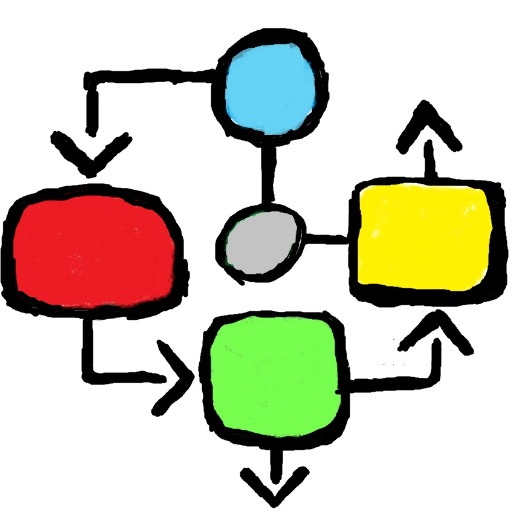Diagram DataView-AI-powered data visualization.
AI-powered diagrams for data visualization.
Create a sample to showcase your capabilities
Visualize this data and provide insights
Related Tools
Load More
Diagrams & Data: Research, Analyze, Visualize
Complex Visualizations (Diagram & Charts), Data Analysis & Reseach. For Coders: Visualize Databases, UserFlows, ERD, PlantUML and More. For business & data analysis: Mindmaps, Flowcharts and more.

Data Visualizer 👉 Graphs 👉 Charts
Creates data visualizations, graphs, and charts.

Data Vizard
A data visualization wizard who can help you create beautiful charts and graphs.

DAL-4
AI expert in creating detailed and tailored images without extra commentary.

数据图表匠人
我是数据图表匠人,专业将数据转化为图表。请上传想要制作图表所使用的数据,同时告知我你想要制作图表的内容和主题。

daigr.am
Build charts, graphs, and more.
20.0 / 5 (200 votes)
Introduction to Diagram DataView
Diagram DataView is a comprehensive visualization and data analysis tool designed to transform complex datasets into clear, insightful diagrams. The purpose of Diagram DataView is to enable users to quickly create, manipulate, and share a wide variety of visual representations such as flowcharts, process maps, network diagrams, and more. By facilitating intuitive visual data storytelling, Diagram DataView allows for improved data comprehension, which is crucial for decision-making processes. For example, a project manager can use Diagram DataView to outline project workflows, highlighting key milestones and dependencies, thus ensuring all stakeholders have a clear understanding of the project's progress and objectives.

Main Functions of Diagram DataView
Data Visualization Creation
Example
A business analyst uses Diagram DataView to create a sales funnel diagram.
Scenario
In a sales team meeting, the business analyst presents a sales funnel diagram generated from the latest sales data. The diagram visually breaks down each stage of the customer journey from initial contact to the final sale, highlighting areas where customer drop-off is highest. This allows the sales team to focus their efforts on improving specific stages of the funnel.
Interactive Diagrams
Example
A software engineer uses Diagram DataView to create an interactive network diagram.
Scenario
During a system architecture review, a software engineer presents an interactive network diagram. Team members can click on different nodes to see detailed information about each component, such as server specifications, software versions, and network connections. This interactive element helps the team quickly identify bottlenecks or outdated hardware that may need upgrading.
Data Integration and Analysis
Example
A financial analyst integrates Diagram DataView with a data analytics platform.
Scenario
To prepare a financial report, a financial analyst integrates Diagram DataView with the company's analytics platform. This integration allows the analyst to pull real-time financial data into Diagram DataView, creating up-to-date financial flow diagrams. These diagrams help visualize cash flow trends, investment distributions, and profit margins, providing stakeholders with a comprehensive overview of the company’s financial health.
Ideal Users of Diagram DataView
Business Professionals
Business professionals, such as project managers, business analysts, and operations managers, benefit from Diagram DataView by using it to visualize workflows, processes, and organizational structures. This aids in decision-making, strategic planning, and communication with stakeholders, as visual representations are often more accessible and easier to understand than raw data or text descriptions.
Technical Teams
Technical teams, including software developers, network engineers, and system architects, can utilize Diagram DataView to map out complex technical structures and workflows. By visualizing network architectures, software module interactions, or data flow diagrams, these users can better plan, communicate, and execute technical projects, ensuring all team members have a clear understanding of the system's design and requirements.

How to Use Diagram DataView
Step 1
Visit aichatonline.org for a free trial without login, also no need for ChatGPT Plus.
Step 2
Once on the platform, navigate to the 'Diagram DataView' section from the main menu. This feature allows you to create, modify, and visualize data diagrams intuitively.
Step 3
Upload your dataset or select from pre-existing templates. Ensure your data is clean and well-structured for the best results.
Step 4
Customize your diagram by selecting various chart types, adjusting settings, and adding annotations. This step is crucial for tailoring the visualization to your specific needs.
Step 5
Export or share your completed diagram. The tool offers multiple formats such as PNG, PDF, and interactive HTML, ensuring flexibility in presentation and distribution.
Try other advanced and practical GPTs
Chat Immobiliare
AI-powered real estate assistant.
Yosu - YouTub Video Summarizer
AI-powered YouTube Video Summarizer

ChatADV
AI-powered legal solutions for everyone.

SplashDash
AI-Powered Marketing Assistant
Email Marketing Sequence Creator
AI-Powered Email Campaigns Made Easy

The Unconscious Character
Deep insights into character psychology.
foldsliceGPT
AI-Powered Ptychographic Reconstruction Assistant

Language Learner
AI-powered interactive language practice

B2B Sales Advice powered by OpenAI
AI-powered insights for B2B sales success.

Course Design Wizard
AI-powered Course Design Assistance

Flight Booker
AI-Powered Flight Booking Made Easy

O'zbekcha tarjimon
AI-powered Uzbek translation, made easy.

- Data Analysis
- Presentation
- Business Reporting
- Collaborative Projects
- Visualization Design
Diagram DataView Q&A
What types of diagrams can I create with Diagram DataView?
Diagram DataView supports a wide range of diagrams, including flowcharts, organizational charts, network diagrams, and various types of data visualizations like bar charts, pie charts, and scatter plots.
Can I import my own data into Diagram DataView?
Yes, you can easily upload your own datasets in formats such as CSV or Excel. The tool allows you to map data points directly onto the diagrams, providing a seamless integration between your data and the visual output.
How does Diagram DataView enhance data analysis?
Diagram DataView helps users visualize complex data structures, making it easier to identify patterns, trends, and relationships. This visual representation supports deeper insights and more informed decision-making.
Is Diagram DataView suitable for collaborative projects?
Absolutely. Diagram DataView allows multiple users to work on a diagram simultaneously, with real-time updates and version control. This makes it ideal for team projects and collaborative data analysis.
What are the export options available in Diagram DataView?
You can export your diagrams in various formats including PNG, PDF, and interactive HTML. These options allow you to use the diagrams in presentations, reports, or embed them directly into websites.